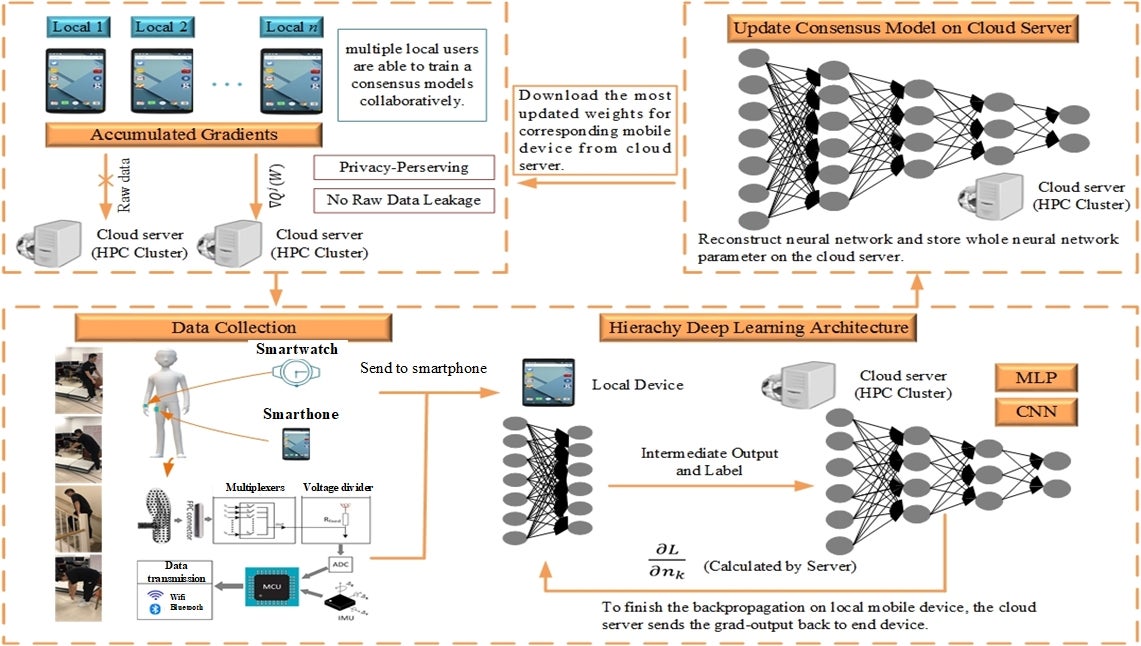ISSACS Fellow Xiaoye Qian combined his enthusiasm for problem solving with a focus on data-driven design for promoting public healthcare research to address one of the most common healthcare problems - fall detection. Xiaoye recently received his M.S. in Electrical Engineering.
The ISSACS fellowship supported his research into Wearable Computing Architectures combined with Distributed Deep Learning Hierarchy, and the publication of two papers: “Wearable Computing Architecture over Distributed Deep Learning Hierarchy: Fall Detection Study,” X Qian, H Chen, H Jiang, J Green, H Cheng, MC Huang, IEEE Sensors Journal 2; and “The Smart Insole: A Pilot Study of Fall Detection,” X Qian, H Cheng, D Chen, Q Liu, H Chen, H Jiang, MC Huang, EAI International Conference on Body Area Networks, 37-49.
In summary, Xiaoye’s work involved the design of a distributed, hierarchical neural network (DHNN) system leveraging a centralized cloud server, a smartphone, a smartwatch and paired smart insoles. The smartphone, smart watch, and smart insoles are connected, and the smartphone is connected to the centralized cloud server. To protect patient privacy, the cloud server works with the smartphone to train a high-quality centralized model while keeping the data distributed. The smartphone is in charge of storing the personal sensor data collected from the smartwatch, smart insole and itself. Moreover, the private smartphone implements the training process locally, using these personal sensor data and only uploads the parameters to the server. To reduce the computational overhead, the DHNN architecture is divided into two parts – a shallow layers model and a deep-layers model. The smartphone runs the shallow-layers exclusively and leaves the deep-layers model to be implemented by the cloud server. The figure below provides an overview of the system design.



